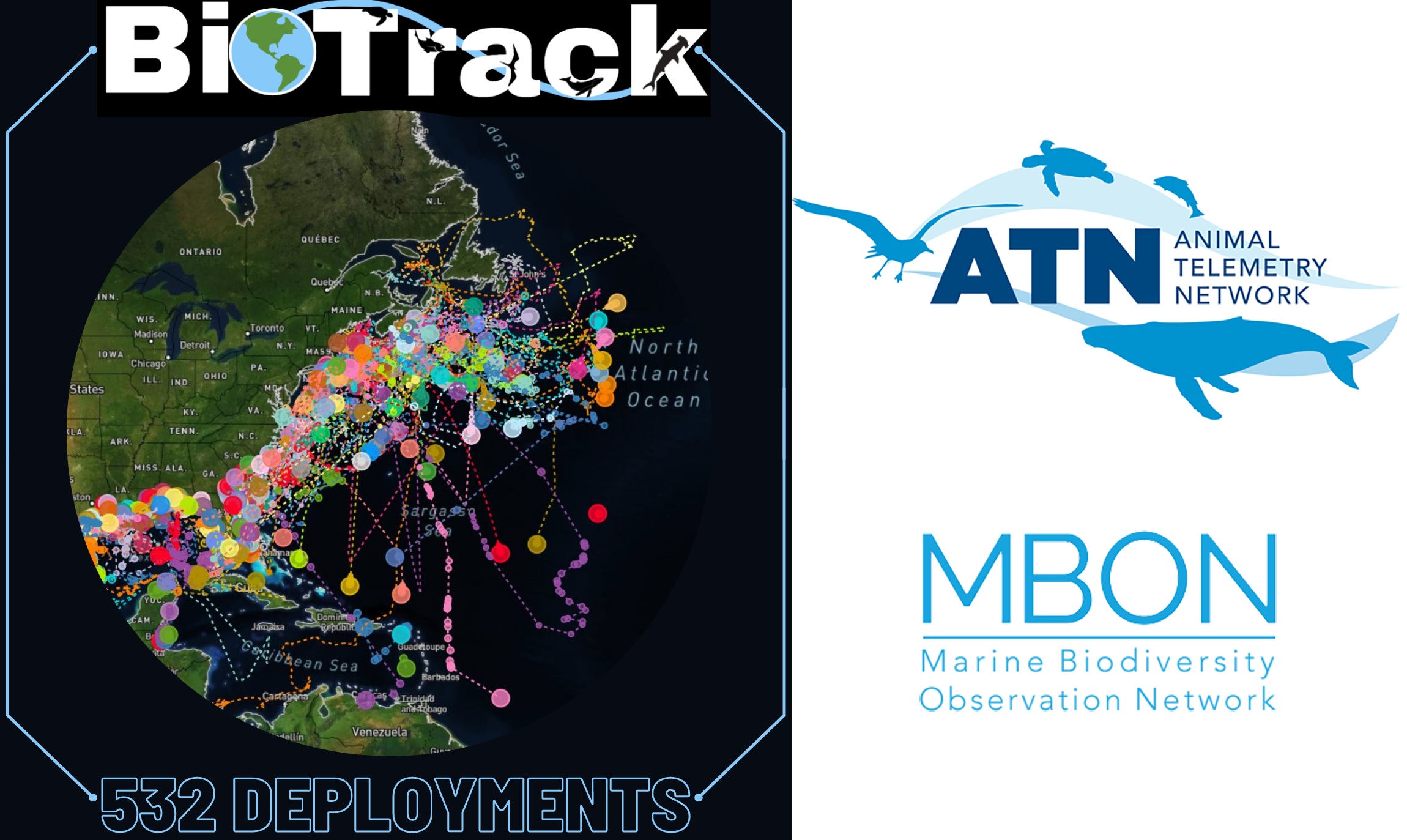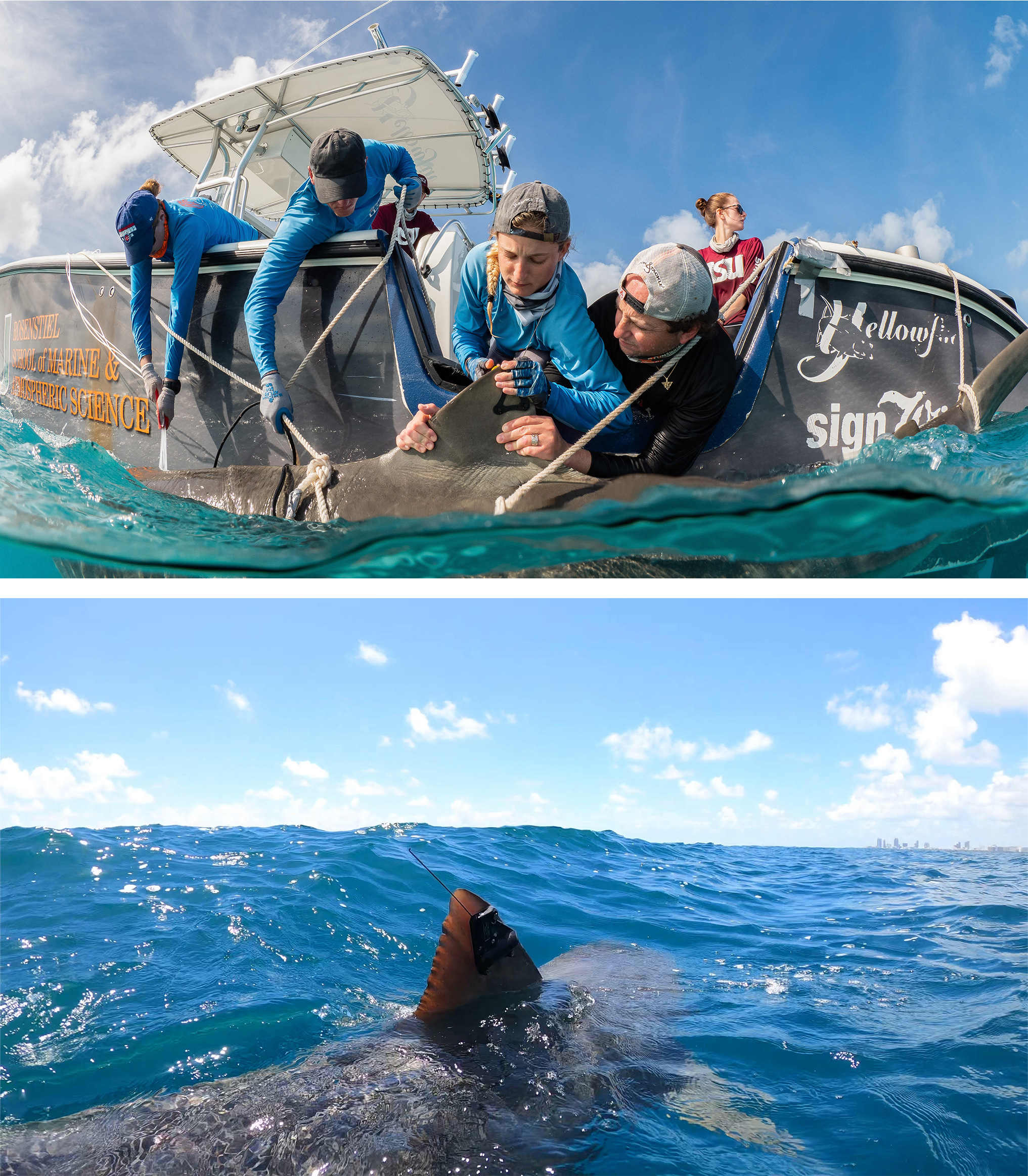

A screenshot of the ATN Data Assembly Center (DAC) map display showing some example marine animal satellite telemetry tracks in the DAC from the South Florida/Gulf of Mexico region.
Knowledge about marine species hotspots and how they are changing will provide opportunities for prioritizing spatial protections, planning for multiple use of ocean spaces, and monitoring for ecosystem responses to environmental change.
The data will be made available in an interactive portal available to the public within shared areas of the websites of the Marine Biodiversity Observation Network (MBON) and the Animal Tracking Network (ATN).
Currently the effort focuses on the Western North Atlantic, Gulf of Mexico, and Caribbean Sea, with a plan to scale the framework to other regions.

Frequently Asked Questions
Q: What are the specific project objectives?
A: Specific objectives include:
- Identify and predict the location and timing of biodiversity ‘hotspots’ of marine species
- Characterize the environmental conditions underlying these hotspots.
- Map hotspots with management areas and maritime jurisdictions to determine level of overlap with ocean uses, to develop conservation options, and increase the efficiency of fisheries by reducing bycatch
- Monitor and model if and how these biodiversity hotspots change over time and space in response to changing environmental conditions
Q: What is the end products and project deliverables?
A: There are several product and deliverables that we hope will come from BioTrack:
- Multi-author scientific papers. Data contributors will be co-authors.
- Data summary visualizations and infographics that will be supplied to management bodies to aid in assessments
- Stronger linkages between MBON and the ATN
Q: What are the benefits to collaborating?
A: Benefits to collaborators include:
- Assistance with tracking data management
- Archiving of tracking data
- Fulfilling broader impact outreach: data summary visualization and infographics will be accessible to the public from the MBON website
- Co-authorship in publications
- Application of data as a management tool
- Building collaborative networks and supporting graduate student research
Q: What data are you looking for?
A: We are looking for acoustic and satellite tagging data from past or current projects. Information needed includes species, deployment location and dates.
Q: What species are you looking for?
A: We are looking for any marine species that have been acoustic or satellite tagged (marine mammals, seabirds, teleosts, sharks, reptiles)
Q: Who will have access to my data?
A: Raw data will be protected to the extent desired by the contributor. If you join this collaboration, you will be the PI for your specific project. Access to the raw data will be granted to the leads of this effort to help coordinate and support joint data analyses and collaboration between all participants. PIs will only have access to their assigned projects and no raw data from any other BioTrack contributors will be shared unless permitted by the contributor.
Q: How is my data protected?
A: Please see the data management plan for more information.
Q: Will my data become public?
A: Data will be aggregated and synthesized into products, which will be made available through the ATN portal as well as the final BioTrack project housed on the MBON website. Not all data from all contributing researchers will have to be released at the same time, and we will work with PIs to release data at a time that works for them and their needs, since they will likely want to publish stand-alone manuscripts.
Q: Will this preclude me from publishing my data separately?
A: Not at all. Individual data contributors are free to use their data in any way. Collaboration in BioTrack does not prevent or preclude contributors from using their data in any other research projects or papers.
Q: What is the timeline for this project?
A: As this is a large scale project with many collaborators, we predict this to progress over the next few years. Updates will be shared as they arise.
Q: How do I become a collaborator?
A: To join this collaborative initiative, please contact Neil Hammerschlag.
